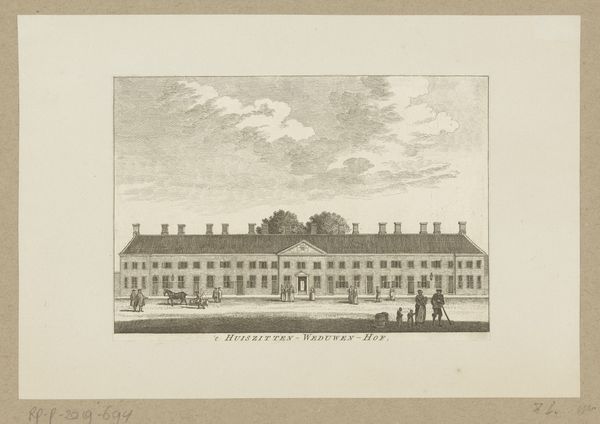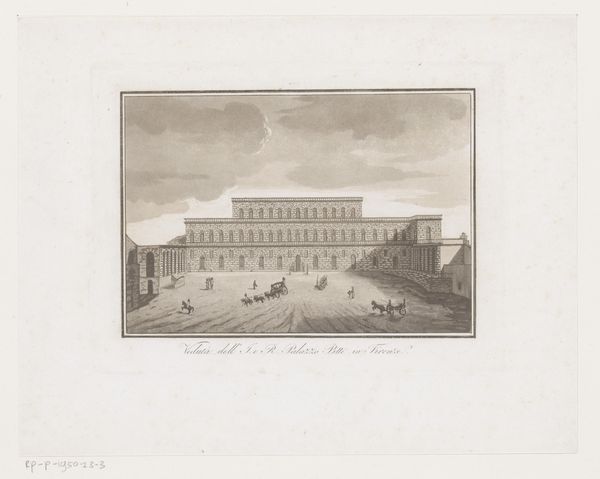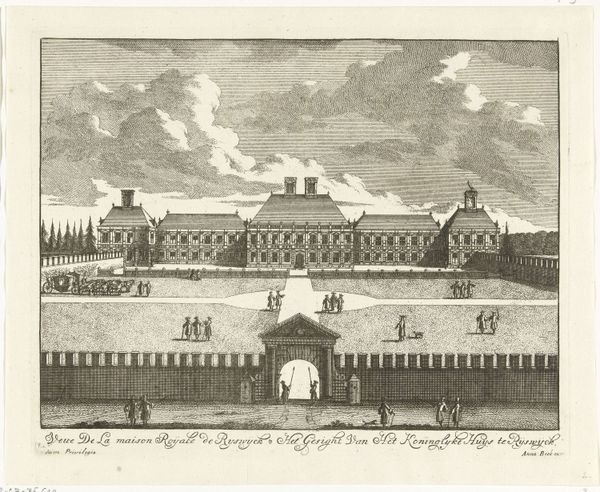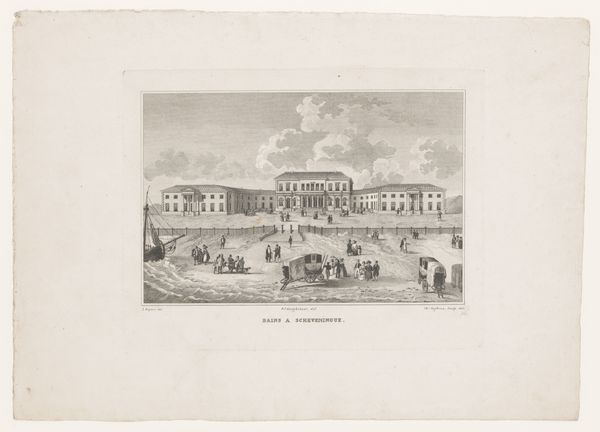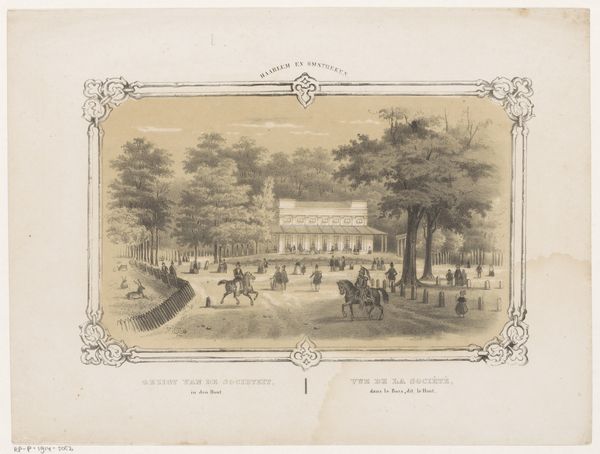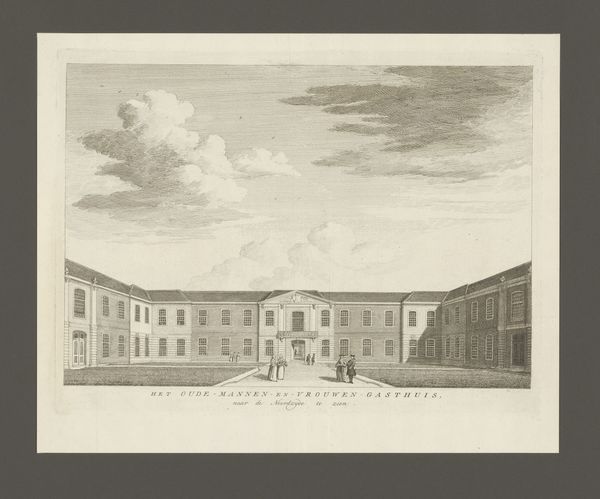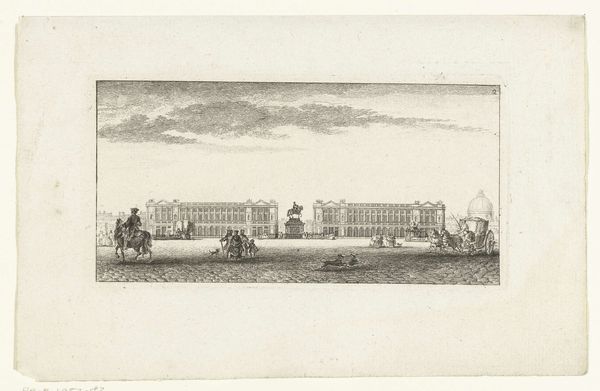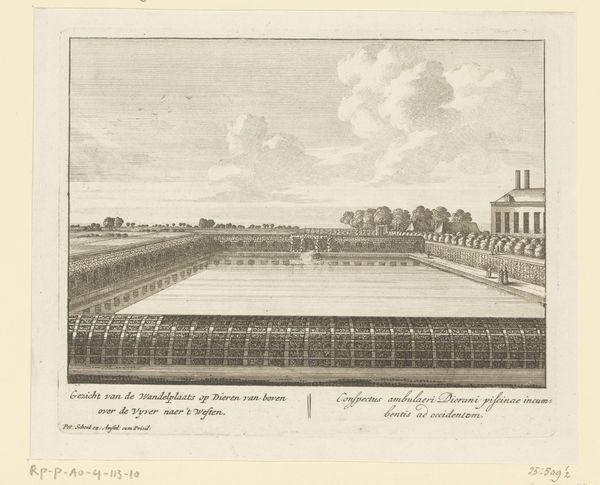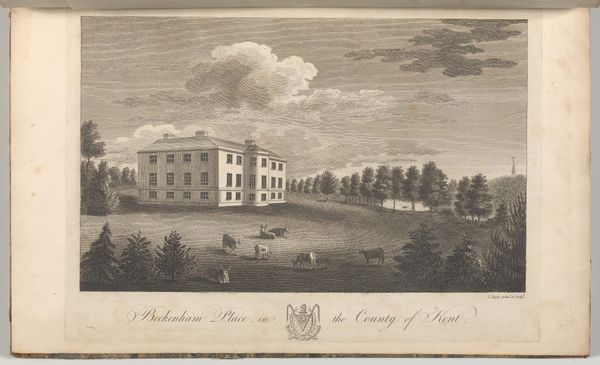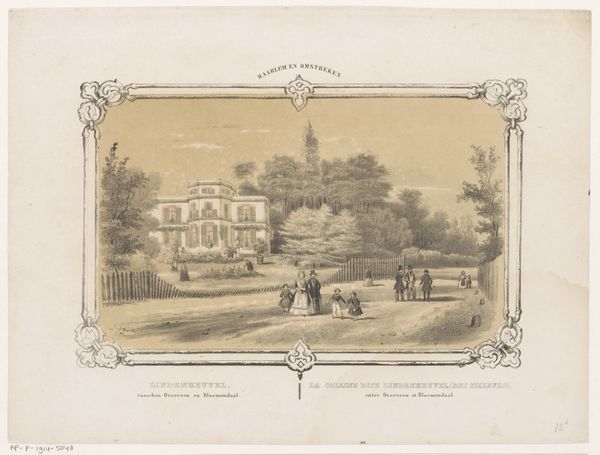
drawing, engraving
#
drawing
#
neoclacissism
#
landscape
#
academic-art
#
engraving
Dimensions: height 350 mm, width 430 mm
Copyright: Rijks Museum: Open Domain
Editor: This is an engraving from around 1820 by E. Huygens, called "Badhuis te Zandvoort," showing the bathhouse. It feels so meticulously crafted, with all the little figures carefully placed. What do you see in it? Curator: It's tempting to just see a charming scene, but let's dig into what the production of an image like this *meant*. Engravings weren't mass-produced like later printing methods, which indicates a certain value placed on the image, right? How do you think the relative cost of commissioning or buying this impacted its reach, and thus, its social influence? Editor: So, not everyone would have had access to images like these, meaning it catered to a certain class? Curator: Exactly! It suggests the consumption habits of a particular social strata – the wealthy who visited bathhouses. Now, consider the bathhouse itself: what materials would it have been made from? And who was involved in extracting, transporting, and constructing these? Editor: Probably local materials like brick and wood, things that were relatively accessible, and local laborers. Curator: And who *owned* those resources, the land they were sourced from? The labor itself – who benefited most from that exchange? The engraving flattens those inequalities in service to a picturesque scene, doesn’t it? What’s visible and what's intentionally made invisible in this image is incredibly telling. Editor: It definitely gives me a lot to think about. I was so focused on the overall scene, I completely missed the material context of the whole process. Curator: Precisely. It challenges us to question whose stories get told, and whose labor remains unseen. Now that you know this context, does the image have a new appeal to you?
Comments
No comments
Be the first to comment and join the conversation on the ultimate creative platform.
